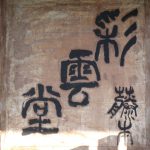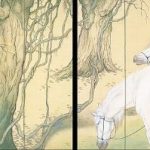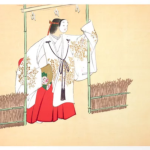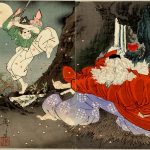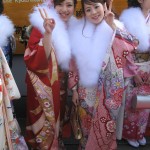Today's post from Ian Ropke is a continuation of yesterday's post on Nihonga... The classic Japanese artist’s best friend For well over one hundred years, Saiun-do has been supplying artists with quality Nihonga pigments and brushes. The business has an illustrious history. The famous painter Tomioka Tessai (1836-1924), just one of Saiundo’s illustrious clients, recommended … [Read more...] about Saiundo Traditional Art Supply Shop
Ian Ropke
Nihonga – The History of Traditional Japanese Painting
Ian Ropke writes... The history of traditional Japanese painting The history of Nihonga, the traditional Japanese manner of painting, can be traced back to the beginning of the Heian period. A manuscript from 999 mentions a style of painting called Yamato-e (Yamato was the old name of Japan). When exactly this new school of painting originated is not known, but it is … [Read more...] about Nihonga – The History of Traditional Japanese Painting
Ikkyū
Ian Ropke writes... Ikkyū was a Zen monk who was famous for burning the candle of life at both ends. By day, he was devout and extremely accomplished monk and scholar. By night, he reveled in the so-called “floating world” of drink and women. He lived in tumultuous 15th century Japan at a time when most of the country was ruined by civil war. Ikkyū was born the … [Read more...] about Ikkyū
Japanese Noh Theatre
Performances for the Gods Ian Ropke writes... Japanese Noh theatre is one of the oldest dramatic forms in world. The early developments of Noh lie in the festive entertainment of various kinds (dance, simple plays) performed at temples and shrines in the 12th and 13th centuries. Noh drama for much of its history was favored by the samurai, priest and aristocratic … [Read more...] about Japanese Noh Theatre
Tengu
Ian Ropke writes: The mountains throughout Japan are home to a very long-nosed creature known as a tengu or mountain goblin. The origins of tengu are not very clear. They can be found in both Shinto and Buddhist texts. Some scholars trace the origin of the tengu to one of the primary gods of Shinto: Susano-o, who shares many of the characteristics for which tengu are feared … [Read more...] about Tengu
Kimono Old & New
As today is 成人の日 ("seijin no hi" or "Coming of Age Day") it seems timely to post Ian Ropke's article on the kimono. First though here is a picture of some brand new adults sporting their kimono's for the day, and one other of a lady I spotted at Ebisu shrine. Ian writes... An industry caught in time An enduring and potent symbol of traditional Japan, the kimono is … [Read more...] about Kimono Old & New
